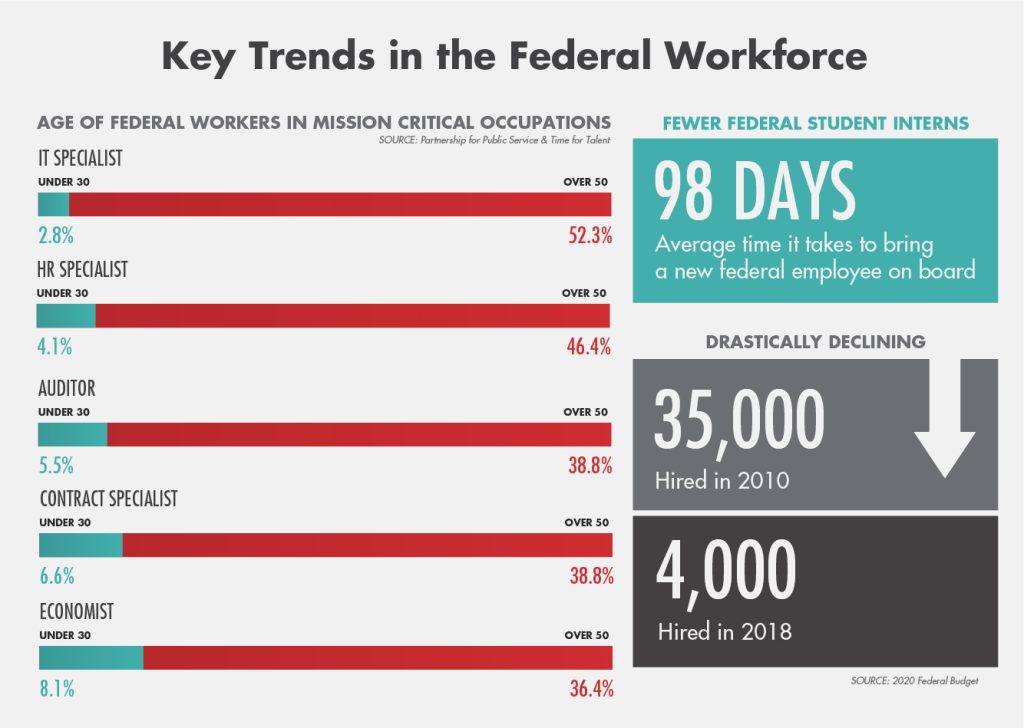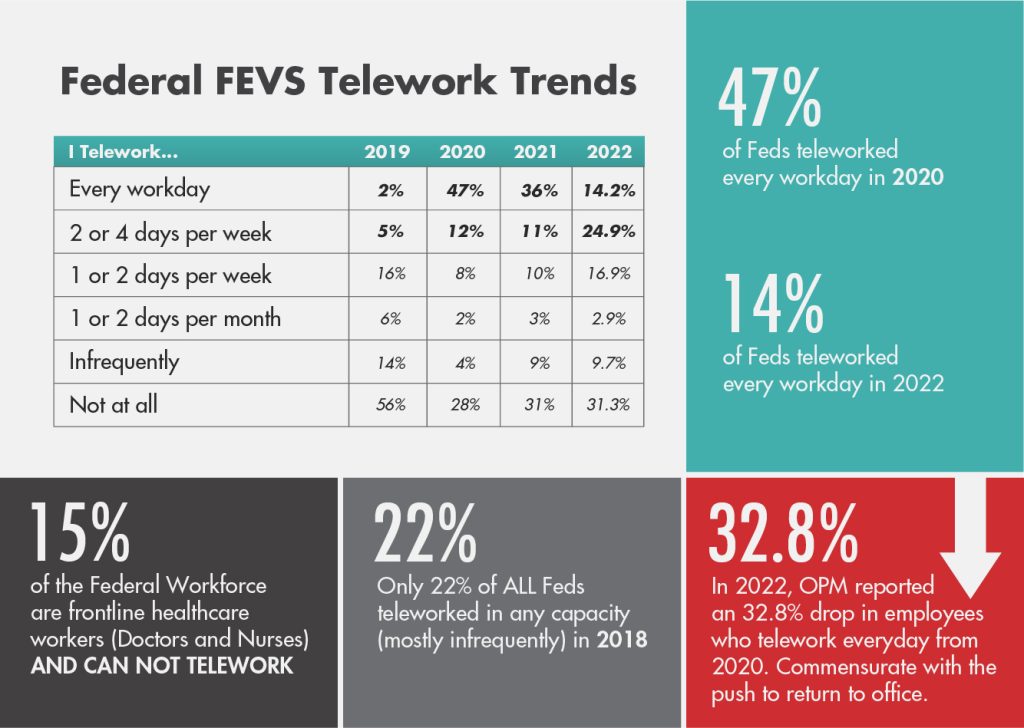
STRETCHING INTO THE FUTURE: (Photo by Karolina Grabowska, Pexels)
Creating cultures that embrace the changing nature of work.
by Mika J. Cross
The federal workplace has undergone a dramatic transformation because of the COVID-19 pandemic, opening new possibilities and challenges for the government and its employees. To thrive in the future of work, leaders and the workforce at large need to develop new skills, mindsets and ways of working that foster flexibility, innovation and resilience. Navigating the massive transformation in the way we work also requires cultivating a healthy and inclusive culture that promotes flexibility, career pathways that align to meaningful work and a focus on worker well-being to create high-performing, resilient teams that are prepared for success.
The Department of Defense employs over 700,000 federal civilians, with the Army being the largest employer among the military departments. The DOD civilian workforce is a critical component of the military and national security readiness, and yet it faces exceptional challenges in ensuring that its workforce is inclusive, adaptable and diverse enough to meet the changing demands and expectations of the 21st century. According to a recent report from the Government Accountability Office (GAO), DOD and the Army’s civilian workforce face a significant challenge in achieving representation levels for women and historically disadvantaged groups. The report indicates that over the past decade, these representation levels have consistently remained below the levels of the total federal civilian workforce.
|
SAME OLD SAME OLD GAO data shows that the DOD civilian workforce has not become more diverse in the past decade:
|
GENDER GAP IMPACTS
The GAO report documented that DOD hired about 500,000 civilians over the last 10 years, with the largest volume of hires belonging to the Army. However, it also lost more than 500,000 civilians, with the Army also having the most departures. This high turnover could be related to the gender gap found across the board in DOD. For instance, in fiscal year 2020, women left their jobs at a higher rate than men (9.2% versus 5.7%). Moreover, women were underrepresented in senior positions, especially in the Army, where they held only 20% of Senior Executive Service (SES) roles. Another area where women were underrepresented was science, technology, engineering and math (For more information, go to www.mikacross.com or connect with the author on LinkedIn.) occupations, where women accounted for only about 28% of all employees. Women also had the lowest representation among engineering technicians, at about 9% annually.
These disparities coupled with recent research from the RAND Corp. think tank also reveal significant pay gaps in the DOD civilian workforce.
|
PAY GAP RAND’s report found that white males earned more than other demographic groups in DOD’s civilian workforce from fiscal year 2012 to 2021, without a clear explanation. The research revealed that among U.S. Navy civilian engineers, information technology (IT) specialists and computer scientists, Black women in a GS-12 IT management job in Virginia make $5,185 less and that white women in the same positions make $6,570 less, on average, than their male counterparts. |
SKILL GAPS AND AN AGING WORKFORCE
The GAO has identified skills gaps as a high-risk issue since 2001, signaling a stark warning that the government lacks the necessary skills in critical occupations such as human resources; science, technology, engineering and mathematics; cybersecurity and acquisitions. These skills gaps affect the government’s ability to perform its missions and deliver its services efficiently and affects DOD significantly. In fact, in its latest report on high-risk issues for the federal workforce, GAO cites skills gaps, staffing, training and workforce planning issues affecting DOD business systems modernization, weapons system acquisition and protection of technologies critical to U.S. national security interests.

AGING OUT: The federal workforce is getting older. As a large percentage of federal employees retire in the next few years, a shortage of critical skills will grow, according to the GAO analysis of 2023 Federal Employee Viewpoint Survey. (Graphic by Mika Cross and the U.S. Army Acquisition Support Center (USAASC))
The percentage of workers over age 55 has almost doubled in the last two decades. The Bureau of Labor Statistics estimates that by the year 2028, one in four American workers will be 55 or older. The federal workforce is also facing a retirement wave as a large percentage of federal employees will be eligible to retire in the next few years, leaving behind gaps in leadership and institutional knowledge.
The aging of the workforce affects DOD and the Army’s future, as it may worsen the skills gaps and impact the mission outcomes in the next decade. This could also become a “perfect storm” for the federal government, since only 8 % of its workers, on average, are under 30. The low number of those early in their careers in the federal workforce, compared with those who can retire—especially in critical fields like IT, cyber, human resources, acquisition, and data science—raises serious concerns about how agencies can fulfill their mission if we don’t change. This is also proof of why we must adapt to the changing nature of work and attract and retain talent for the future of the federal workforce.
WHAT WORKERS WANT
Agencies were able to protect the health and safety of federal workers during the COVID-19 pandemic with remote work, increased telework and other work schedule flexibilities. During the height of the pandemic, when the U.S. economy lost millions of jobs and the unemployment rate reached almost 15%, the average daily visits to USAJOBS.gov, a measure of federal job interest, rose by 2.8%. This may be related to the remote-friendly positions that the government offered at that time.
In a recent report by the Intelligence and National Security Alliance, “Reimaging the SCIF Life,” research points to expanding more flexible work options for the intelligence community as a matter of national security. Some intelligence communities, like the National Security Agency (NSA), are considering a range of workplace flexibilities given that 50% of its workforce is retirement eligible and those who worked there five years or less are quickly rising to 20%. These shifting demographics mean the NSA is on a major, multiyear hiring push, and considering a range of workplace flexibilities it would have previously considered unimaginable.

TELEWORK DROP: The federal workforce’s use of telework dropped drastically since its peak of the COVID pandemic in 2020, according to the 2023 Federal Employee Viewpoint Survey (FEVS). (Graphic by Mika Cross and USAASC)
EMPLOYEE ENGAGEMENT AND MISSION OUTCOMES
Employee engagement is a key factor for high-performing teams that deliver the best mission outcomes, as shown by research from Gallup. Engaged employees are more productive, loyal, present and healthy.
The President’s Management Agenda aims to improve employee engagement by addressing skills gaps. However, the 2022 Federal Employee Viewpoint Survey (FEVS) revealed a significant drop in employee engagement and morale, due to issues such as dissatisfaction with pay and returning to the office after several years of increased remote and telework options.
In contrast, in 2020 when close to half of FEVS respondents reported working from home and the pandemic increased work demands for more than half of the FEVS respondents, the 2020 FEVS scores were the highest in five years in the following areas:
- Overall engagement and overall global satisfaction.
- Leadership and management practices.
- Work environment.
- Ability to achieve the agency’s mission.
BRACING FOR THE FUTURE
The Army must foster a culture of flexibility, fairness and equity in its civilian workforce—values that are essential for the future of work. Doing so can help attract and retain top talent, promote innovation and creativity, enhance decision-making and problem-solving, boost trust and collaboration, and improve readiness and mission effectiveness from any location. The Army also needs to develop leaders who can adapt to any cultural context.
To achieve these goals, the Army should implement specific actions to support the well-being and flexibility of its civilian employees.
- Encourage supervisors and managers to embrace and promote a wider range of access to flexible work arrangements, such as telework, compressed work schedules or part-time options; provide training and mentoring programs to enhance the skills and career development of its employees; and create a supportive and inclusive work environment that values diversity and respects individual differences.
- Conduct regular and comprehensive assessments of the current and future skills and competencies needed for its civilian workforce and develop strategies to close any gaps.
- Monitor and evaluate the effectiveness of its initiatives and the impact of workplace flexibilities such as remote work, telework in combination with special hiring authorities to recruit, develop and retain talent, and report on its progress and challenges to Congress and other stakeholders.
- Strengthen leadership development and succession planning programs and ensure continuity and stability in key positions. Identify and address the root causes of leadership turnover and vacancies and establish clear roles and responsibilities for its senior leaders.
- Monitor and assess the culture and climate of the Army’s civilian work environment regularly, using various methods to collect feedback from employees at all levels and to monitor ongoing impacts on its organizational health and performance as a readiness indicator.
- Address the gaps and barriers identified by the assessments by developing and implementing action plans, such as improving hiring and promotion practices, providing mentoring and coaching programs, enhancing training and development opportunities and increasing recognition and rewards.

TAKING STEPS: Employee engagement is a key factor for high-performing teams. The Army needs to take actionable steps to create a culture of flexibility, support and well-being for its civilian employees. (Photo by Mitchell Luo, Pexels)
CONCLUSION
The global shifts in work culture have created a “Great Reshuffle,” where workers seek more meaning, autonomy and empathy from their employers. In a period when employees are reassessing their relationships with work, it is important to train supervisors and managers on how to lead a diverse, modern and flexible workforce that can support the mission while offering various work alternatives to skilled employees who can deliver their best work in different ways. Organizations that can adapt to these changes and offer flexible, purposeful and human-centered work environments will have a competitive advantage over those that cling to outdated and rigid workplace norms.
The 2018 Federal Work-Life Survey conducted by the Office of Personnel Management revealed that 64 % of federal employees have responsibilities as parents or caregivers. Flexible work options such as part-time, job-sharing, telework, remote work, compressed work schedules and flexible work schedules can help with talent management, engagement and recruitment for all employees. For example, flexible work can attract and retain high-quality and talented workers while allowing them to choose the best work option for their situation, such as military spouses who need flexibility to cope with their family needs while their partners are deployed or away.
By taking actionable steps to create a culture of flexibility, support and well-being for its civilian employees, the Army will be well-positioned to attract and retain a diverse and talented civilian workforce that can support its critical missions in the future of work. The time is now to take advantage of the opportunities of the changes we made to the way we worked because of the pandemic, to improve human capital management, enhance workforce performance and readiness and ensure the success of its missions and goals.
For more information, go to www.mikacross.com or connect with the author on LinkedIn.
MIKA J. CROSS is an expert, speaker and innovator in the field of workplace transformation. In December 2021, she testified as an expert witness at the Future of Federal Work hearing for the U.S. House of Representatives Oversight and Accountability Committee’s Subcommittee on Government Operations and the Federal Workforce. Cross has over 20 years of public service experience in various federal agencies, including the U.S. intelligence community, the White House Office of Personnel Management, the Department of Labor and the Department of Agriculture. She also served as vice president of employer engagement for FlexJobs, a fully remote company. Cross served in the U.S. Army as both an enlisted Soldier and an officer. She holds a Master of Public Administration from Georgia Southern University and a B.A. in communications from the University of Louisville.







